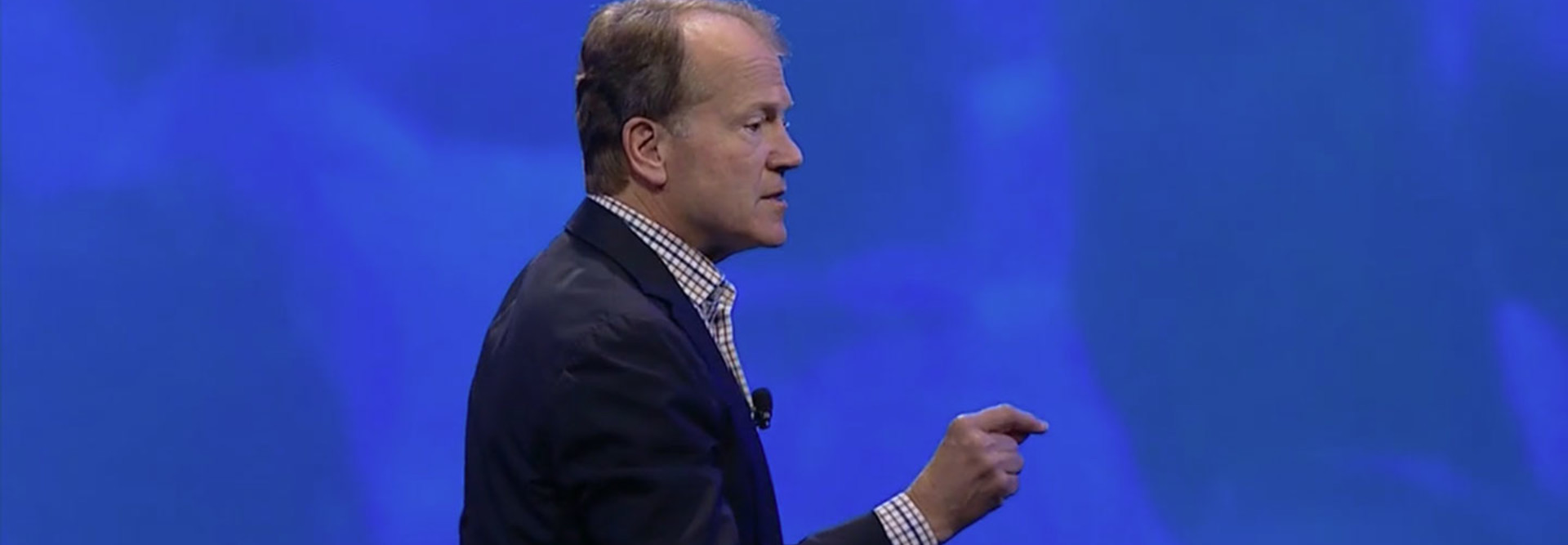Cisco Live 2015: The ‘Fast IT’ Race Has Begun
It’s the end of an era in IT and the beginning of another one. Cisco executives say the heart of this change will be the network, a digital architecture that powers and improves our industries, cities and lives.
How companies and governments go about creating those connections is the theme of Cisco Live 2015, which runs through Thursday in San Diego.
Cisco will have to forge ahead into this brave new world of connectivity without its charismatic chief executive officer of 20 years, John Chambers.
In his final keynote at the helm of the networking giant, Chambers reflected on his first Cisco Live “in front of a room of 25 people” compared to what Cisco says the gathering has become: a global event with 25,000 people attending and 80,000 joining online.
Next month, 17-year Cisco vet and former senior vice president of worldwide operations Chuck Robbins will become CEO of the $47 billion company. Chambers will assume the role of executive chairman and continue to serve as chairman of Cisco’s board.
The Next Chapter
As Cisco enters the next chapter of its 31-year history, the IT space also will experience tremendous change, said Karen Walker, Cisco’s chief marketing officer, before introducing Chambers.
“Our industry is transforming,” she said. “Our businesses, our professions are transforming. Let’s build tomorrow today. Let’s make that bold move now.”
Cisco executives believe the network will change IT even more than the Internet did.
“We believe the next wave of the Internet is here and it’s sweeping us from the information age to the digital age,” she said. “This wave of the Internet will allow us to change the world.”
The New IT
Disruption is nothing new for IT. What will be new in the connected era? The speed and relentlessness of change, Chambers said.
“It’s all about innovation and having the courage to change,” he said of the transformation needed in business — transformation he oversaw as CEO of Cisco. “The technology is the easiest part. The hardest is the cultural and organizational parts.”
As companies grow increasingly digital, the leading IT firms will differentiate themselves by being able to quickly find solutions to break down barriers in their organizations.
“The challenges will be around company culture and how to get teams to work together who are used to being rewarded in individual silos,” Chambers said.
Businesses must move quickly in this new connected world or, he warned, “it’s going to get ugly.
“Fast IT will be the future of this industry. This is an inflection point that is here and now, regardless of industry. IT no longer enables your business strategy; it is your business strategy.”









